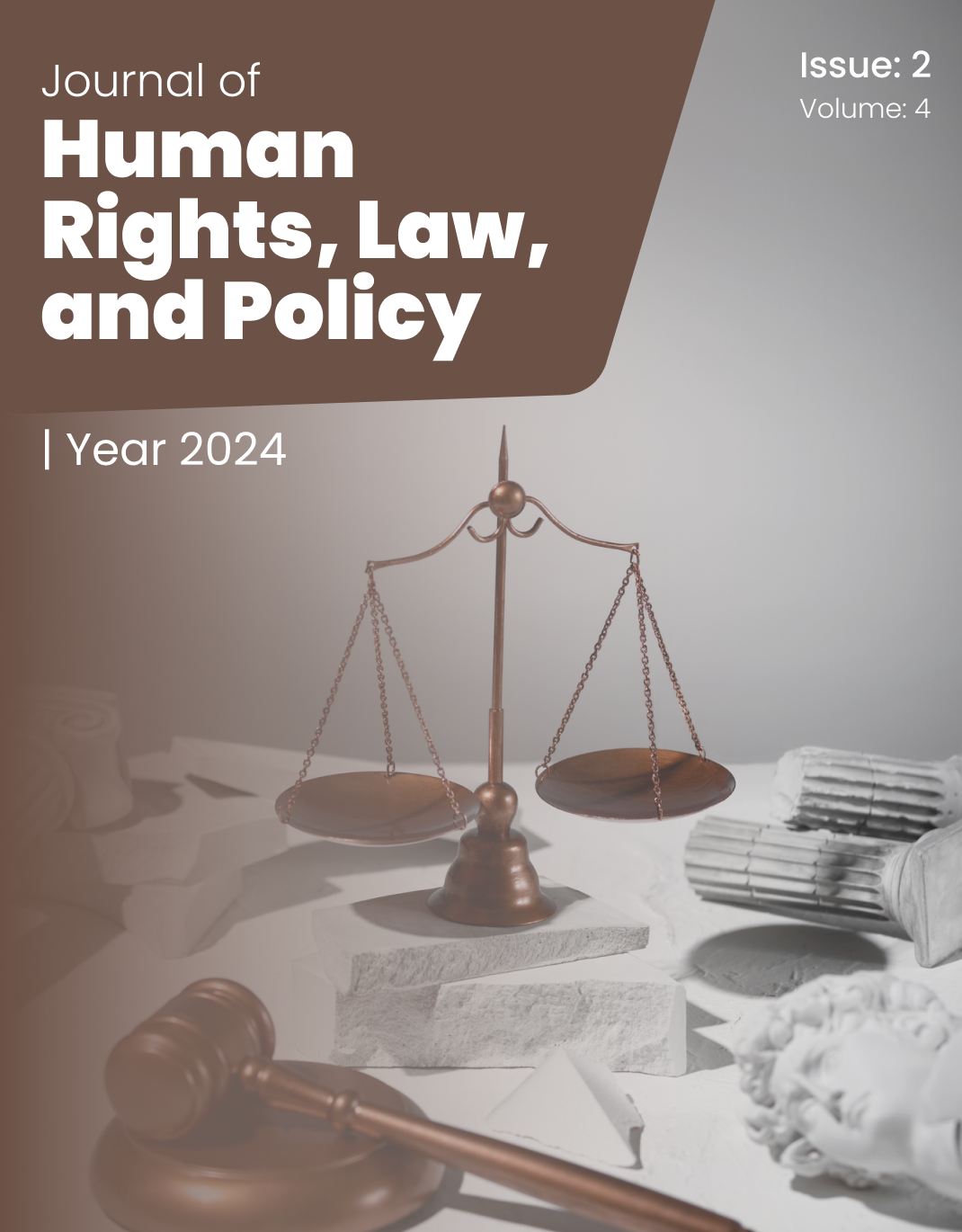Dimensions of Legal Accessibility for Persons with Disabilities in Public Services
Keywords:
Legal accessibility, disability rights, public services, qualitative research, Iran, structural barriers, NVivo analysis, CRPDAbstract
This study aimed to explore the dimensions of legal accessibility for persons with disabilities in public services, focusing on structural, informational, procedural, and attitudinal barriers in the context of Tehran, Iran. A qualitative research design grounded in phenomenological inquiry was employed to capture the lived experiences of persons with disabilities in accessing legal and administrative services. Semi-structured interviews were conducted with 28 participants selected through purposive sampling in Tehran. Data collection continued until theoretical saturation was achieved. All interviews were audio-recorded, transcribed verbatim, and analyzed using thematic analysis with the aid of NVivo software. The analysis proceeded through open, axial, and selective coding, ensuring an inductive approach to theme generation. Trustworthiness was established through peer debriefing, member checking, and triangulation of coding procedures. Thematic analysis yielded four core dimensions of legal accessibility: (1) structural barriers in legal access, including inaccessible physical infrastructure and digital platforms; (2) limited awareness and understanding of legal rights due to poor outreach and legal illiteracy; (3) negative experiences in interactions with legal and administrative bodies, characterized by discrimination, communication breakdowns, and procedural complexity; and (4) enabling factors and recommendations, including the supportive role of advocacy organizations, inclusive policies, and proposed legal reforms. Participants described widespread inaccessibility and institutional distrust, but also highlighted practical solutions and positive institutional practices. Legal accessibility for persons with disabilities in Tehran is constrained by multifaceted and intersecting barriers that limit equal participation in justice and public services. Addressing these challenges requires structural reforms, rights-based education, institutional training, and inclusive policymaking. The findings offer evidence-based insights to inform national disability strategies and promote compliance with the UN Convention on the Rights of Persons with Disabilities.
Downloads
References
Degener, T. (2017). A human rights model of disability. In V. Della Fina, R. Cera, & G. Palmisano (Eds.), The United Nations Convention on the Rights of Persons with Disabilities: A Commentary (pp. 31–49). Springer. https://doi.org/10.1007/978-3-319-43790-3_2
Flynn, E. (2019). Disabled justice? Access to justice and the UN Convention on the Rights of Persons with Disabilities. Routledge.
Ghasemi, A., & Yekta, Z. (2021). Exploring the barriers of legal and administrative inclusion for people with disabilities in Iran. Iranian Journal of Social Policy, 12(1), 25–48.
Goodley, D. (2014). Dis/ability studies: Theorising disablism and ableism. Routledge.
Hughes, B., McKie, L., Hopkins, D., & Watson, N. (2012). Love’s labour’s lost? Feminism, the disabled people’s movement and an ethic of care. Sociology, 39(2), 259–275. https://doi.org/10.1177/0038038505050538
Karr, V., Nitkin, D., & Eldar, S. (2018). Advancing accessibility and inclusion in legal systems: A review of global practices. Disability and Society, 33(3), 410–428. https://doi.org/10.1080/09687599.2018.1431101
Kayess, R., & French, P. (2008). Out of darkness into light? Introducing the Convention on the Rights of Persons with Disabilities. Human Rights Law Review, 8(1), 1–34. https://doi.org/10.1093/hrlr/ngm044
Kiani, S. (2009). Disability in Iran: An overview. Asia Pacific Disability Rehabilitation Journal, 20(1), 101–115.
Lawson, A., & Beckman, N. (2020). The right to access justice: A disability perspective. International Journal of Human Rights, 24(2–3), 245–263. https://doi.org/10.1080/13642987.2019.1671352
Lazar, J., Goldstein, D. F., & Taylor, A. (2015). Ensuring digital accessibility through process and policy. Morgan Kaufmann.
Lord, J. E., Suozzi, D., & Taylor, A. L. (2012). Lessons from the experience of disability rights law in the United States. In M. Langford (Ed.), Social Rights Jurisprudence: Emerging Trends in International and Comparative Law (pp. 81–104). Cambridge University Press.
Meyers, S. (2016). NGOs and the making of visible disabled people: The reshaping of the disability movement in global perspective. Palgrave Macmillan.
Parker, C., & Clements, L. (2008). The UN Convention on the Rights of Persons with Disabilities: A new right to independent living? European Human Rights Law Review, 4, 508–523.
Shakespeare, T. (2013). Disability rights and wrongs revisited (2nd ed.). Routledge.
Soldatic, K., & Meekosha, H. (2012). Disability and neoliberal state formations. Critical Sociology, 38(4), 577–595. https://doi.org/10.1177/0896920511430864
Titchkosky, T. (2011). The question of access: Disability, space, meaning. University of Toronto Press.
United Nations. (2006). Convention on the Rights of Persons with Disabilities and Optional Protocol. https://www.un.org/disabilities/documents/convention/convoptprot-e.pdf
World Bank. (2017). Inclusion matters: The foundation for shared prosperity. Washington, DC: World Bank.
Downloads
Published
Submitted
Revised
Accepted
Issue
Section
License

This work is licensed under a Creative Commons Attribution-NonCommercial 4.0 International License.

